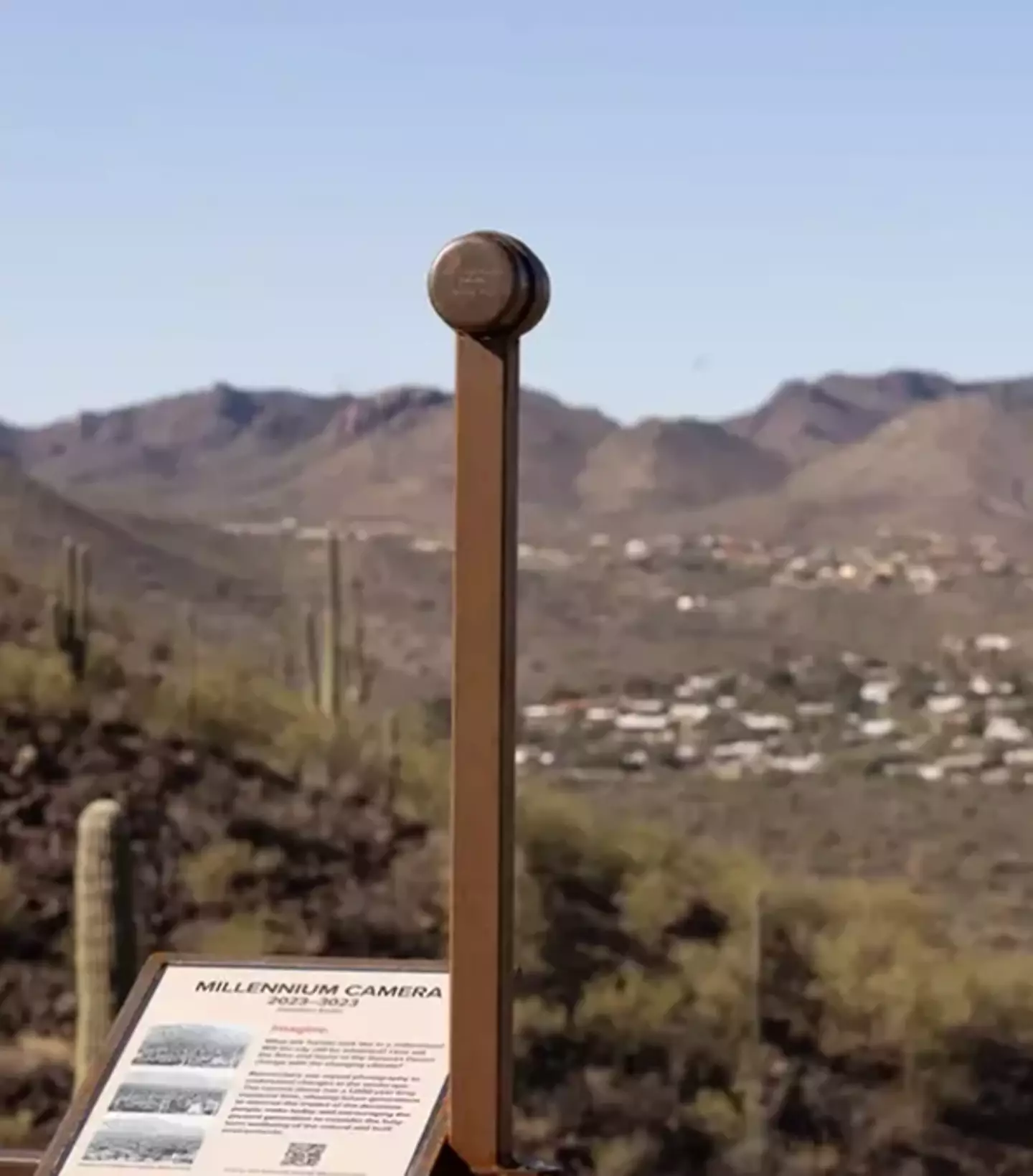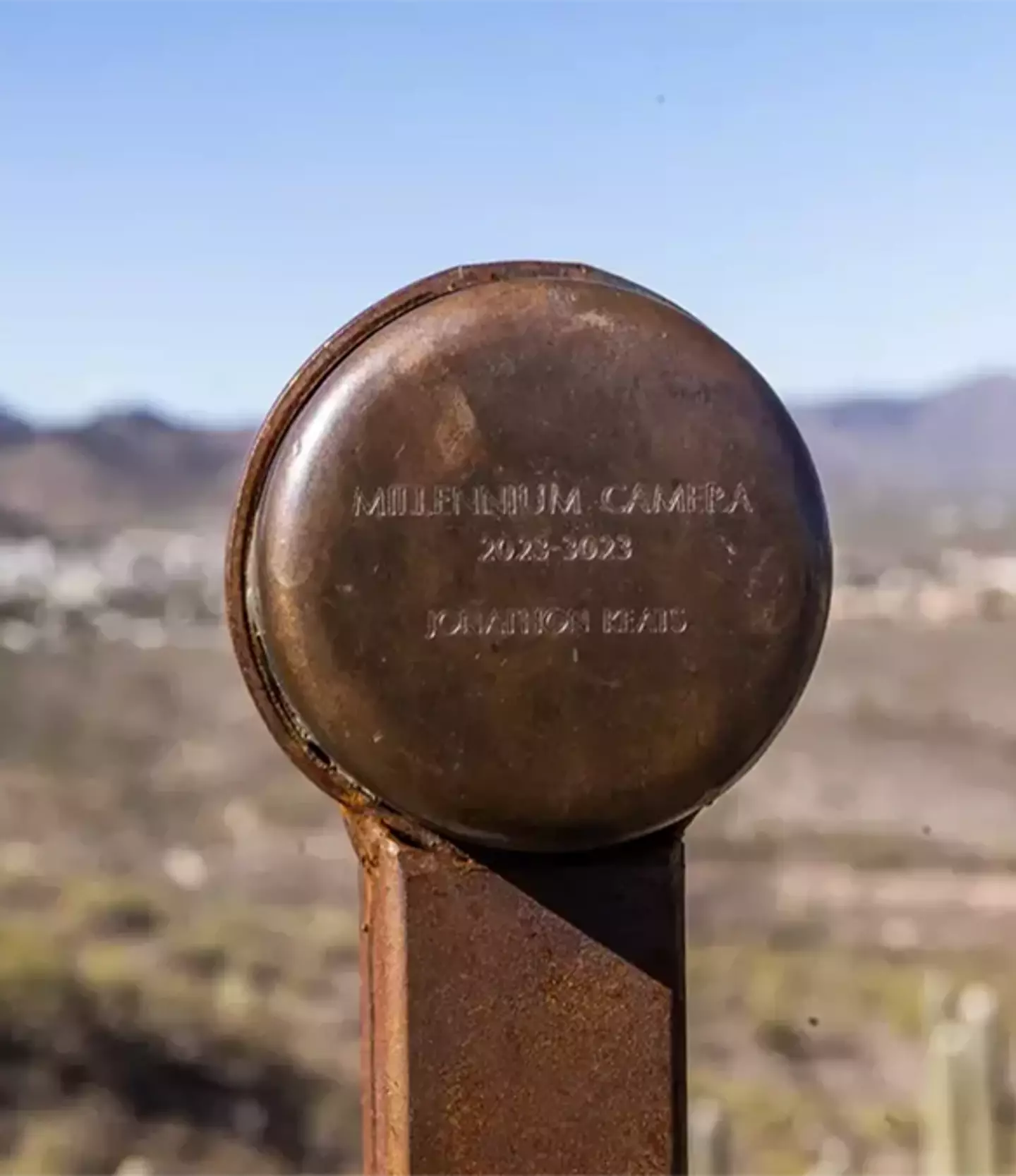
Time lapses are a cool way to condense hours of the action or still nature in front of you into just a few minutes.
But this project is taking it to an extreme.
Jonathon Keats, an experimental philosopher at the University of Arizona, has set up a camera to snap the same picture image of a desert in Tucson over 1,000 years.
Unfortunately, as he just started his project last year, the image won't be ready until 3023. So, we all won't be around to see the final result.
Advert

Keats, known for his ambitious experiments, wants to capture a millennium's worth of history and change in the Tucson landscape.
The 'Millennium Camera' was placed next to a bench on the path of a hiking trail facing Tumamoc Hill, overlooking the Star Pass neighbourhood in Tucson, Arizona.
There's even a sign next to the camera asking onlookers to imagine what the next millennium might look like.
Advert
Commenting on his bold experiment, Keats said: 'I’ve been trying to figure out how we can somehow instill some sense of the consequences of our actions over a span of time that in some way coincides with or reflects the degree to which we affect our environment.
'Photography seemed like a particularly interesting way in which to go about this.'

Keats admitted that 1000 years is a 'long time' and there are many 'reasons why this might not work.'
Advert
'The camera might not even be around in a millennium. There are forces of nature and decisions people make, whether administrative or criminal, that could result in the camera not lasting,' Keats continued.
Predicting what life looks like in 100 years let alone 1,000 is pretty hard, especially since the near future is painted as doom and gloom.
Just last month, the 2024 Doomsday Clock was announced to remain at 90 seconds to midnight, as a result of the ongoing political conflicts and climate change.
Keats said: 'Most people have a pretty bleak outlook on what lies ahead.
Advert
'It's easy to imagine that people in 1,000 years could see a version of Tucson that is far worse than what we see today, but the fact that we can imagine it is not a bad thing.
'It's actually a good thing, because if we can imagine that, then we can also imagine what else might happen, and therefore it might motivate us to take action to shape our future.'